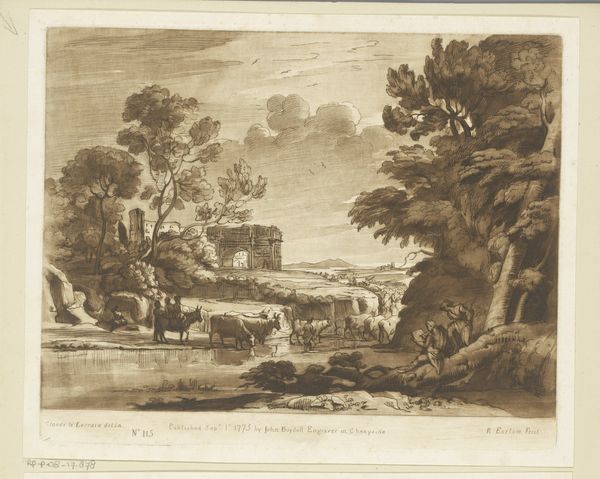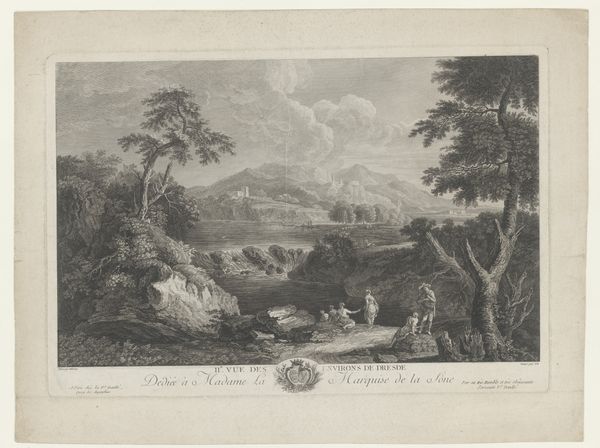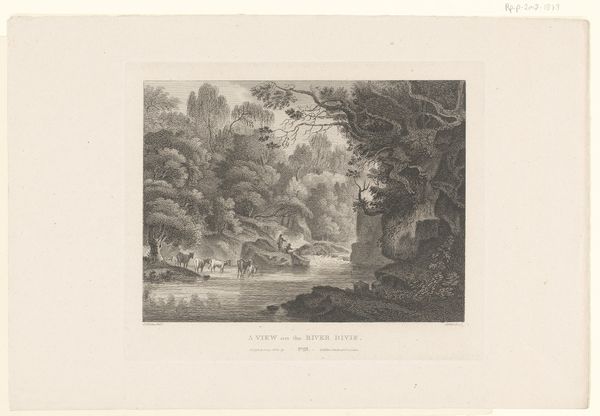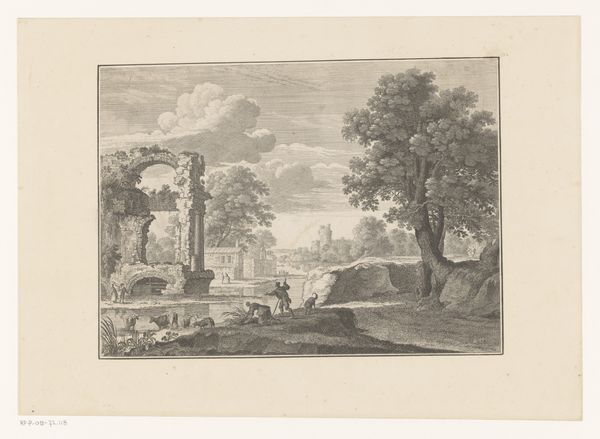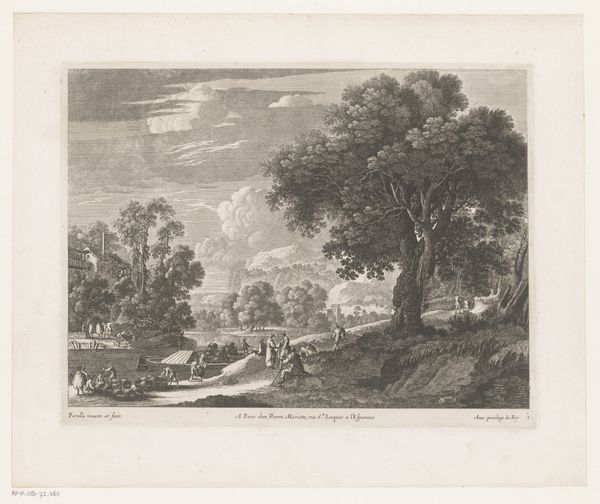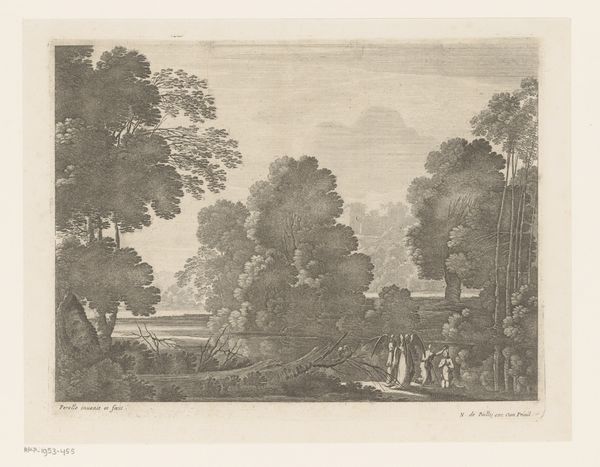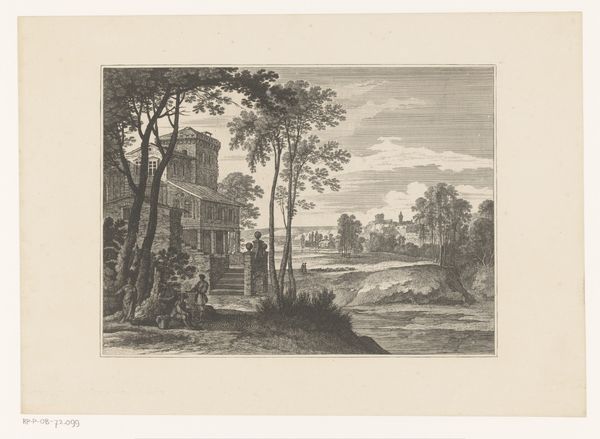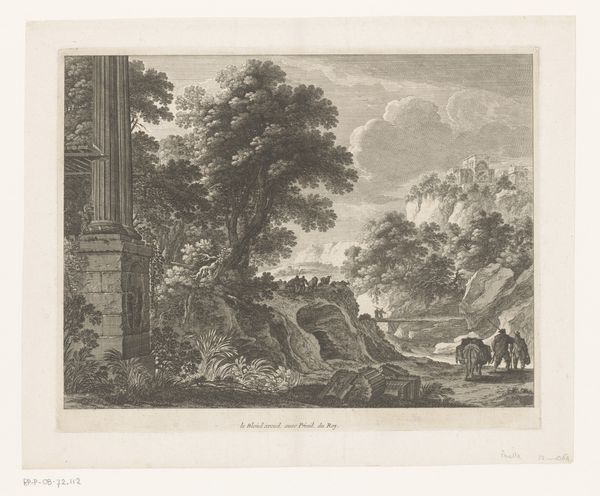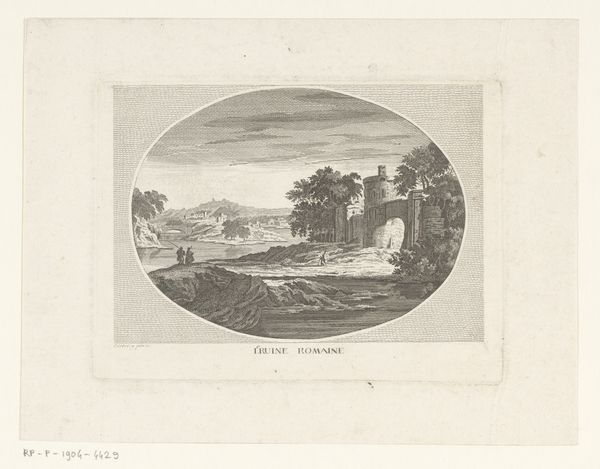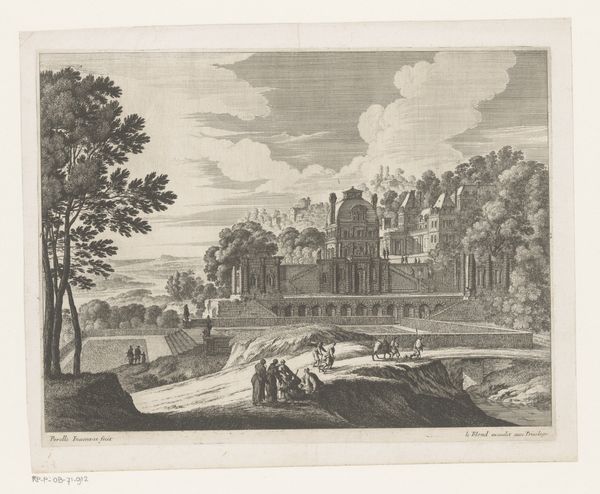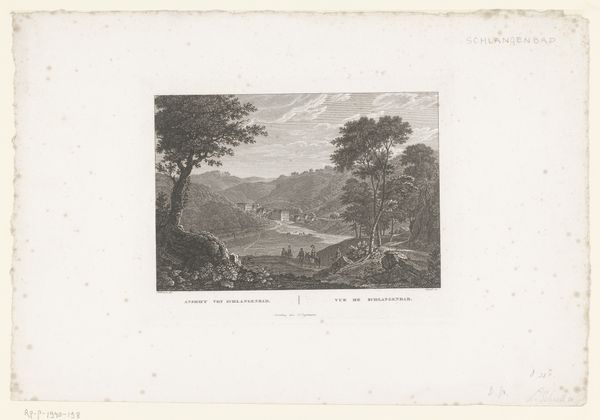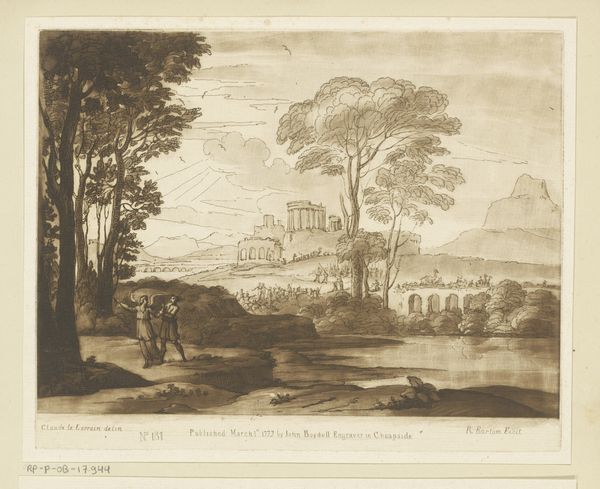
Landschap met houten brug over een rivier bij Charenton 1750 - 1799
0:00
0:00
Dimensions: height 222 mm, width 277 mm
Copyright: Rijks Museum: Open Domain
Curator: Here we have "Landscape with Wooden Bridge over a River near Charenton," dating from sometime between 1750 and 1799. It’s an etching and engraving by Angélique Moitte, currently held at the Rijksmuseum. Editor: It strikes me as a rather serene composition. The soft grey tones evoke a quiet, almost melancholic atmosphere. The horizontal lines created by the bridge and the river create a nice visual rhythm. Curator: Moitte produced this landscape during a period of significant social change. The late 18th century in France saw growing unrest and intellectual ferment that would culminate in the French Revolution. While the image doesn’t explicitly depict political turmoil, the emphasis on nature could be seen as a reaction against the increasingly artificial court life at Versailles. Editor: Absolutely, there's a definite retreat into an idealized nature here. Notice how the artist plays with light and shadow to create depth. The varying densities of line work suggest atmosphere, and the detailed rendering of the foliage adds texture. The structural arrangement directs the eye from left to right, moving from the more tranquil cottage towards the bustling mill. Curator: Indeed. And it’s important to remember that landscape art like this served a social function. It wasn’t just about depicting pretty scenery; it was often about asserting ownership and control over land, reflecting the power dynamics of the time. Views of estates were a popular commission. While this is a more modest view, it connects to those broader themes. Editor: I see that, though the piece feels far from propagandistic. The focus really is on capturing the effects of light and the interplay of forms, the subtle gradation in the etching... it's quite elegant. I am taken with how this piece has managed to subtly manipulate perspective; it really guides the viewer through the landscape. Curator: This landscape demonstrates how art of this period intertwined aesthetics with social and political meaning. It's a fascinating example of how an image, seemingly pastoral on the surface, is loaded with contextual richness. Editor: Looking at it with fresh eyes, I'm more attentive to the subtle balance and composition than I initially was. I think the key is that it blends the immediate sense of observation with something more studied, an ideal.
Comments
No comments
Be the first to comment and join the conversation on the ultimate creative platform.
